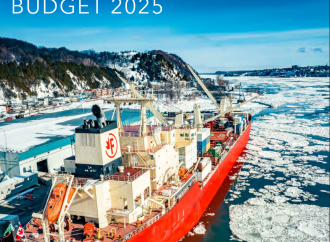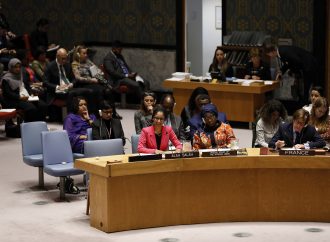Does the world need less Canada? One might think so, reading last week’s federal budget. The cuts to foreign aid and how they are justified suggest that Canada is no longer interested in providing a leadership role in international development.
Confusing numbers
The budget document states that Canada will cut $2.7 billion from international development assistance over the next four years. But what that means is not clear. It seems to indicate an average of $675 million per year less than currently planned in each of the four years. That would represent a cut of about 5% or 6%, which is less than some figures that had been circulating before the budget was released.
However, that statement could also be interpreted as progressive cuts that will lead to $2.7 billion less in the fourth year, 2029-2030, which would be a much more radical reduction in the aid budget. Are the annual figures in a table, listed as “Recalibrating Government Programs” at Global Affairs Canada, meant to be the same thing as aid cuts? Hard to tell. Those numbers add up to $2.8 billion. It is all very confusing. Is the lack of clarity and transparency deliberate or sloppiness? I am not sure which would be worse.
Whatever the actual figures mean in practice, Prime Minister Mark Carney is breaking his pre-electoral promise that “My government will not cut foreign aid”.
Back to regularly scheduled programming?
The budget document frames the cuts as “returning international development assistance to a pre-pandemic level”. We are thus to understand that the increases in spending over the past five years were due to COVID-19 and constituted a temporary blip. By implication, the current cuts are not really cuts, but rather a return to “regular” levels.
But that is misleading. The significant increase in Canadian aid spending in 2022 – the year in which Canadian development assistance ballooned – went mainly towards massive assistance to Ukraine, more spending on hosting refugees in Canada and larger contributions to international organizations. So it had little to do with COVID-19. Invoking the “pre-pandemic” level is a game of smoke and mirrors.
The impact of the cuts
Where will Canada’s cuts hit the hardest? Global health will bear the brunt of them because that is where, the document argues, “Canada’s contribution has grown disproportionately relative to other similar economies”. Having spent over 15 years building Canada’s expertise and leadership in this sector, the Canadian government’s new goal is apparently going back to being average.
The cuts will also target some unnamed international financial institutions, which “receive significant support through other sources”. The document also states, “Some bilateral development programs will also be refined and adjusted”, i.e., cut. It doesn’t specify which ones. Reassuringly, it says that Canada will focus “support for countries that need it the most”. But how does that align with the vast majority of the budget document that suggests that Canada will privilege its trade relationships? The former suggests a focus on Africa, but the latter on Latin America and Asia.
The budget distastefully describes the cuts as “savings”. But as Doctors Without Borders pointed out, “aid cuts are not savings – they are choices with real human consequences”. They involve withdrawing assistance, not improving bureaucratic efficiency and reducing overheads. For instance, this year’s slashing of US development assistance has already led to over 600,000 deaths and 7 million extra cases of malaria, among other consequences. Canadian “savings” in foreign aid will also have a negative real-world impact.
The abdication of leadership
The need for international assistance has not decreased with the end of the COVID “emergency”. The impact of the climate crisis is only worsening and the radical cutting of aid budgets by major donors such as the UK, France, Germany, and above all the US, mean that Canadian assistance is needed more than ever. It also creates an opportunity for Canada to distinguish itself from other Western donors.
On the campaign trail earlier this year, Carney said that “Our vision is that this is a time for Canada to lead”. But now in power, the Carney government has retreated from that vision. Instead, it wants to focus on building “Canada Strong”, which is the title of the budget document.
Canada needs the world
Strengthening Canada’s position at home and providing leadership abroad, however, are not in opposition. The two can go hand in hand. Canada needs the world far more than the world needs Canada. At a time when Canada is trying to diversify its trade relations and could use all the friends it can get, including in the Global South, it would make more sense to increase its aid spending.
This blog was first published on the McLeod Group blog on November 10th, 2025.










